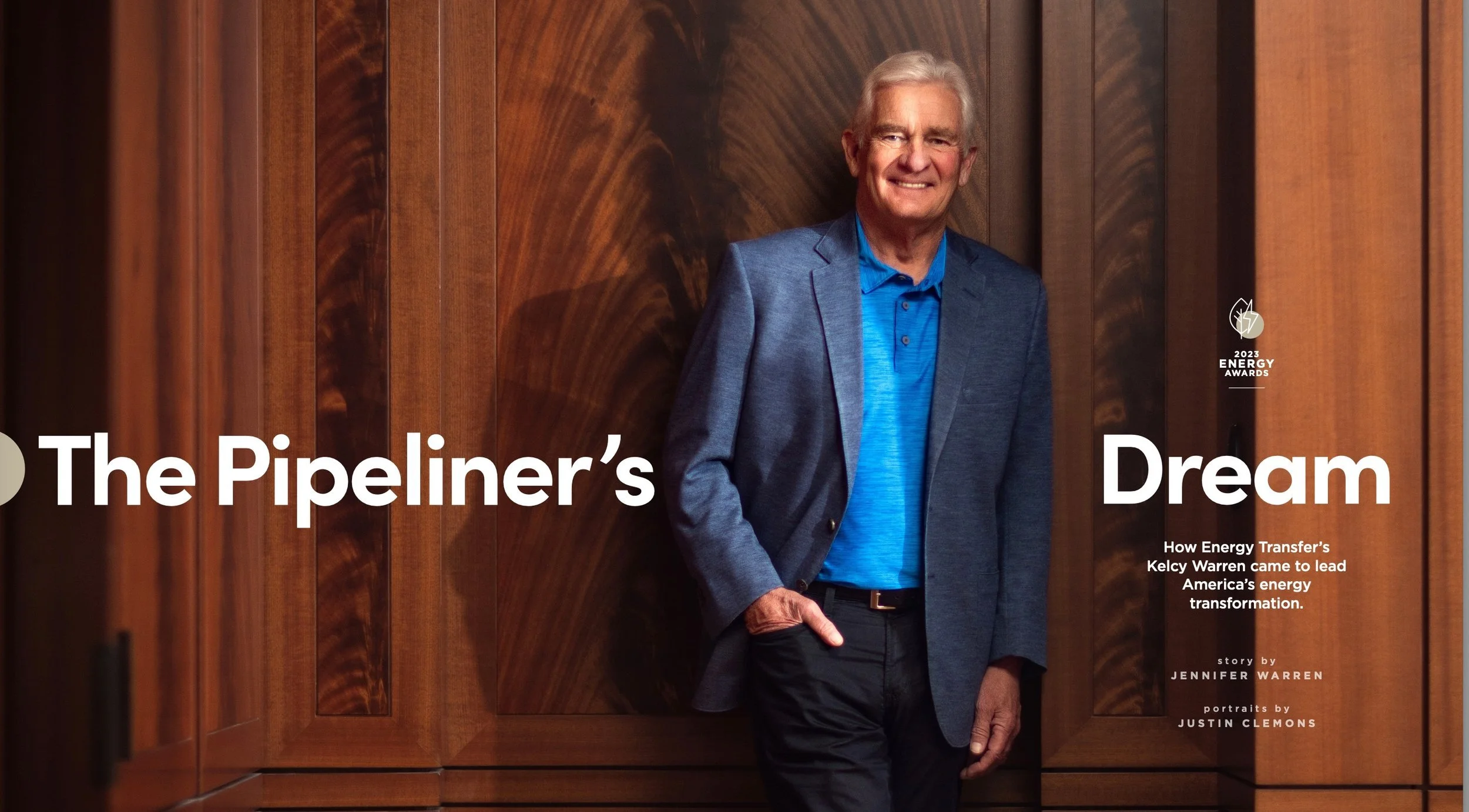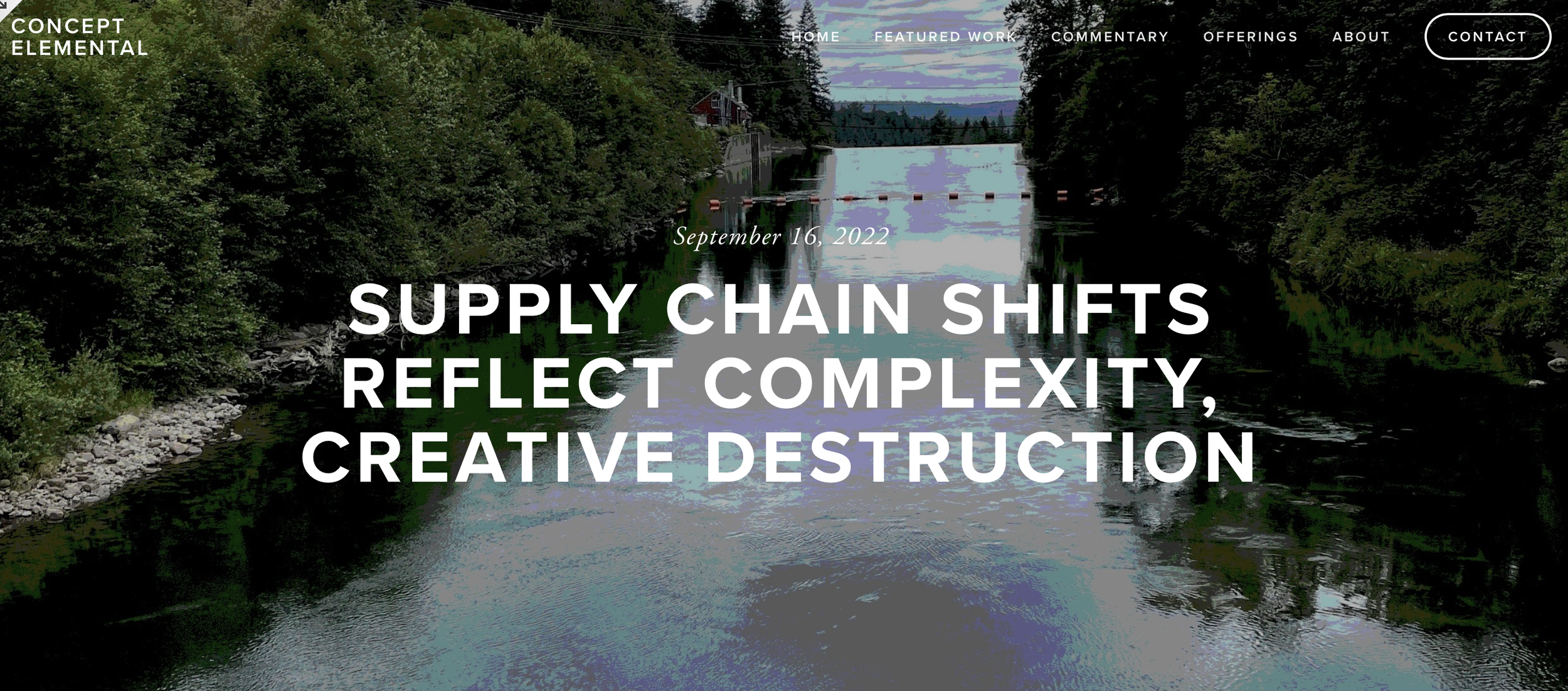An Energy Conversation Year-End 2023: With Jennifer Warren
(originally commissioned, with updates)
1) Since the D CEO energy edition in the fall of 2022, featuring George Yates of HEYCO Energy in “Solving Europe’s Energy Crisis,” what has happened with the idea of the global natural gas world?
In early October 2022, Yates and I discussed the fuzzy contours of a global gas market, seven months after Russia’s invasion of Ukraine. The U.S. has since become a reliable LNG supplier to Europe, quickly. Our reliability has fostered more stable relationships with Asian buyers too. I’d say we have a free-market premium connected to brand U.S. LNG.
Well documented, the U.S. LNG market has grown in response to Russia’s invasion of Ukraine. U.S. export capacity expansions are expected to add 10 billion cubic feet (bcf) per day by 2027, owing to five projects under construction. In the 2023 energy edition, Kelcy Warren noted we were exporting about 13 bcf. The U.S. is currently a reliable low-cost producer of natural gas. We didn’t even export LNG until 2016. Same story with oil. The U.S. did not export crude as it was banned until 2015, and now we export 5 million barrels per day of crude oil. If the U.S. did not export, the flows and prices of oil and gas around the globe would look very different. This is the reality of the energy world in which we live. Policymakers need to work with the reality.
In Europe, policy thinking is changing some to reflect a broader approach to their “energy transition.” Natural gas and nuclear energy were added to their taxonomy of acceptable paths to cleaner energy. More nuance is happening at the individual country level owing to the reduction of Russian pipeline gas and the need to integrate renewables and electric vehicles onto grids, and the real costs of doing so. (Update: Upcoming European parliamentary elections will be revealing, and many plans are being rolled back.)
Importantly, Baker Institute director Ken Medlock conveyed at the Dallas-Kansas City Fed energy conference in Oklahoma City in November that ‘U.S. LNG has added liquidity and depth in a market that did not [previously] have it.’ That is really an astounding and resounding comment. To me, it means: Besides just the trading implications of U.S. oil and gas flows, there’s a capital market corollary. U.S. capital markets being further engaged in energy ‘ownership’ broadly, brings more transparency to resources issues—their economics and stakeholders.
2) What were the most significant takeaways in crafting “The Pipeliner’s Dream” feature about Energy Transfer and Kelcy Warren?
Many hands were involved, and I was lucky people believed in me and I believed in them. The sheer magnitude of Energy Transfer’s now-global infrastructure network—and the vision and guts it took to pull it off—is mind blowing. The humility and brazen-ass boldness of chairman and once long-time CEO Kelcy Warren are primary leadership qualities admired by many, many industry veterans and his team. I do not know if there is any equal to this story, and for that I am really anguished. It was over fifteen years in the making for me to gather this working understanding these energy leaders afforded me, and others. And the guard is changing as reflected in leadership changes and energy consolidation, a period really of creative destruction. But the work must go on, for which Kelcy himself noted that they will never stop growing: “It’s just who we are.”
As to the dream…It really was a vision of prescience and showing up to the next right thing. Energy scholar Amy Jaffe of NYU said at the Fed conference, “Geopolitical intuition is sometimes more valuable than hard facts,” in reference to an insight she had about Russia back in 2008 (which actually came true). Kelcy Warren had this in spades, as do great entrepreneurs. He seemed to stare down so many intense and major obstacles such as capital market agendas and fickleness, government policy headwinds, and well-funded activists. Steadiness of vision, alongside garnering the resources to implement ambitious projects, was really apparent. And, the U.S. is a roaring energy powerhouse because of it.
DCEO Energy Edition Nov ‘23
Remarkable tale of America’s infrastructure buildout by a legendary Texas entrepreneur
3) You’ve traipsed around the country, being invited to twelve high-powered energy, disruptive tech and economics conferences this year. What were some of your key takeaways regarding the state of the energy transition?
At a high level, the energy transition as framed in the movement toward cleaner energy, is moving slower than popularly imagined. More headwinds are emerging about natural resource requirements, supply chains and the economics of developing a new clean energy infrastructure system.
Two ironies are really top-of-mind after attending three conferences at which Fed leaders were a dominant force. And notably, my last stop was the North American Blockchain Summit, courtesy of Ann Bluntzer via TCU’s sponsorship.
From the Richmond-Dallas Fed’s tech-disruption conference, hosted by the 5th and 6th districts (Texas is 11th), ideas such as last-mile challenges with connecting green-oriented energy sources and managing blackouts were discussed, alongside the usual energy topics. Given the demands of an increasingly digital world and reindustrialization, the grids of the future are upgrading and integrating many new technologies. Scale and centralization are intertwined with decentralized power generation and innovations—and economics a big driver now.
At the Blockchain Summit, the bitcoin mining stage was where I spent most of my time, talking to visionary entrepreneurs. Irony one: as large power consumers, miners and tech tricked-out businesses are finding ways to use the grid and waste energy sources to be conscious energy stewards. The second irony was that an underlying theme in the bitcoin and the digital asset world is decentralized money; I had just been in the other world of convention—the Fed world, in which global financial markets obsess regarding the path of interest rates up or down and soft-or hard-landings. The digital entrepreneurs were cutting entirely new paths in decentralized approaches. But they also require scale and adoption as well.
I see these paradoxical hybrid worlds both in energy and the vast digital universe of intangible assets. It’s a really exciting time to be involved in all of this. I was really floored at the prospects of innovation in the blockchain and digital assets space as it relates to energy.
4) Are there any new approaches or thinking that is foremost in your mind about energy?
One of the most significant geopolitical and energy events of the 2020s is the invasion of Ukraine by Russia. I attempted to parse the economics of it as relayed by BP’s energy outlook early in the year in a video “Global Energy 2023: Ripple Effects from War, Decarbonization...” At the Fed Energy conference of November 7th, expert Amy Jaffe, formerly on Secretary James Baker’s staff, discussed her work about the inflationary effects of Russia’s war and how war filters through to possible recession, oil price reductions and shocks, and basically a vicious cycle of unfortunate outcomes.
Simultaneously connecting the dots, the Baker Institute director Ken Medlock spoke about the ownership of oil production around the globe. Basically, one-third of global oil supply is produced by shareholder-owned firms, including the “supermajors” such as ExxonMobil, Chevron and BP. Fifty-six percent is produced by national oil companies and the like, ie., OPEC-plus. As shareholder-owned firms have pulled out of Russia, their absence, and technology and capital they brought, creates a void. Who will fill it? We have to be careful what we reward and how we forgive and forget. As much as I grumble about nooses like ESG, it may be useful in holding to some standards for deterring capital away from bad governance. This is an ongoing saga.
From the shift in energy trade routes owing to Russia, Europe is rethinking its energy development path. A case was presented at the Dallas-Kansas City Fed energy conference of an interesting lithium-ion battery refining and processing facility being developed in the EU. The U.S. has plans and commitments to develop advanced battery supply chains as well. These developments are all geared toward electrification of transportation, electric vehicles, and advancing cleaner grid-related prospects. I hold out hope for energy efficiency plays of any type, whether fossil fuel, infrastructure plays which connect things or minerals-related.
Supply chain re-workings and reindustrialization realities are in sharper focus. The necessity of critical minerals to develop the cleaner energy sources such as wind, solar, batteries and the many components connected to them, is facing some headwinds. It’s a heavy lift. This was really front and center for me in late 2022, especially after the passage of the Inflation Reduction Act (IRA) legislation and as the pandemic revealed its economic wake. Now, more research and data has emerged. Interest rate hikes have slowed investment some, and exposed project’s real rates of return— beyond the subsidy. It’s not that these areas won’t progress, but just that growing pains are present. Shale, considered an oil and gas innovation, had many as well. The market will ultimately decide.
My ultimate concern is that of the limitations of physics and further breakthroughs that may derail this new reliance on mining minerals to reduce fossil fuel consumption. It is a razor’s edge, but the “consensus thinking” favors an all-of-the-above energy strategy. (I’m trying to stay open-minded, realistic and pragmatic.) New research is revealing the cracks in the speed at which a transition is possible. Also economics and capital markets will help filter directions as we move ahead. With the dust beginning to settle after the IRA’s passage, and interest rate hikes, a quarter of the market value of U.S. companies, $30 billion, in the S&P Global Clean Energy Index in the six months ended Nov. 27 disappeared. Definitely, a resetting of expectations is upon us. Many in oil and gas always knew this—as they are very much boots-on-the-ground—with a longer legacy mindset earned from booms and busts and the duty to power economies.
The global energy scene in advanced economies since the pandemic and invasion of Ukraine by Russia has reset in many ways. Supply chains in both fossil fuel and electron-related worlds are reconfiguring. The U.S.-China relationship has been more challenging, with China’s green energy policies displaying a new industrial plan with global resource consequences. It is still an interdependent world, with no way out, though polarized positions would say otherwise. The shared planet requires cooperation and good stewardship of nature’s resources. That’s the space I care to play in, and it encompasses all these of resources of which I speak—natural capital.
5) How is North Texas poised to take advantage of the growing global demand for energy and opportunities in innovation?
In meeting business, academic and government leaders from Ukraine, Turkey, Finland, Israel, Canada and elsewhere, to name a few, the common refrain I hear is ‘America is our ally and partner that we count on.’ And the subtext is that we need to keep a strong and resolute leadership position and presence around the globe. The implications are palpable and sentiment tangible. (I’ll be presenting about this at University of Montana/World Affairs Council in Oct. 16-17, 2024.)
In scanning the universe of business leaders and entrepreneurs I encountered in 2023, two critical competencies of U.S. business are energy production and technological innovation. Texas is both ground zero in bitcoin mining and in its energy resource production, plus the valuable knowledge spillover effects connected to both spaces, human capital. With the recent $60 billion acquisition of Pioneer Natural Resources by ExxonMobil, I expect a whole new level of shale resource advancements to occur.
In other corners, the absolute entrepreneurial will to make things happen and solve problems—will make them happen. That’s a crowd I like to run with and advance.











